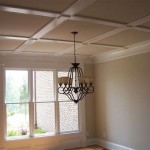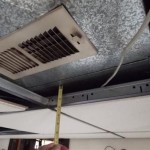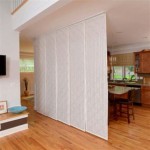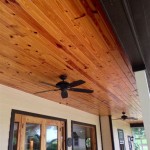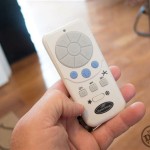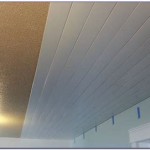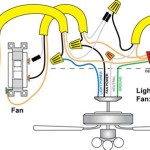Best Ceiling Fans With Lights For Small Rooms
Ceiling fans with lights offer a practical and stylish solution for illuminating and ventilating small rooms. In compact spaces where floor space is limited, combining lighting and fan functionality in a single unit optimizes resources and enhances comfort. Selecting the right ceiling fan for a small room requires careful consideration of size, style, features, and light output to ensure optimal performance and aesthetic appeal.
Small rooms, typically defined as spaces under 100 square feet, demand ceiling fans with blades ranging from 30 to 42 inches in diameter. This size ensures adequate air circulation without overpowering the room or creating excessive wind noise. Consideration must also be given to ceiling height. For rooms with ceilings lower than eight feet, hugger-style or flush-mount fans are recommended. These fans minimize the distance between the fan blades and the ceiling, preserving headroom and preventing safety hazards. Understanding the specific needs of the room, including its size, ceiling height, and aesthetic preferences, is crucial in selecting the ideal ceiling fan.
Key Considerations When Choosing a Ceiling Fan for a Small Room
Several factors warrant careful evaluation when selecting a ceiling fan for a small room. These factors include the fan’s size, design, lighting features, motor efficiency, and remote control functionality. Each element contributes significantly to the overall performance and suitability of the fan for its intended space.
Size and Blade Span: As previously mentioned, the blade span of the ceiling fan is paramount. A fan that is too large will generate excessive airflow, causing discomfort and potentially creating a drafty environment. Conversely, a fan that is too small will fail to circulate air effectively, rendering it useless. A 30- to 42-inch blade span is generally considered appropriate for rooms under 100 square feet. The blade pitch, or the angle of the blades, also affects airflow. Blades with a steeper pitch move more air, but they may also generate more noise.
Design and Style: Ceiling fans are available in a wide range of designs and styles, from traditional to modern and contemporary. Choosing a style that complements the room's existing decor is essential. Finishes such as brushed nickel, oil-rubbed bronze, and matte black are popular choices that can blend seamlessly with various interior styles. Consider the color and material of the fan blades as well. Lighter-colored blades tend to brighten the room, while darker-colored blades can create a more dramatic effect. The overall design of the fan should enhance the room's aesthetic appeal without being visually overwhelming.
Lighting Features: Many ceiling fans come equipped with integrated light kits, which can serve as the primary light source in a small room. LED lights are a popular choice due to their energy efficiency, long lifespan, and ability to provide bright, even illumination. Look for fans with dimmable lights, allowing you to adjust the brightness to suit your needs. The light output, measured in lumens, should be appropriate for the size of the room. A small room typically requires between 400 and 800 lumens of light. The color temperature of the light, measured in Kelvin, also affects the ambiance of the room. Warm white light (2700-3000K) creates a cozy and inviting atmosphere, while cool white light (3500-4100K) provides a brighter, more energetic feel. Some fans offer multiple light settings and color temperature options for added versatility.
Motor Efficiency: The motor's efficiency determines how much energy the ceiling fan consumes. Look for fans with Energy Star certification, indicating that they meet strict energy efficiency guidelines. DC motors are generally more efficient than AC motors, consuming up to 70% less energy. While DC motor fans may be slightly more expensive upfront, they can save you money on your energy bills over the long term. Consider the motor's noise level as well. A quiet motor will ensure that the fan operates silently, without disrupting your activities.
Remote Control Functionality: Many modern ceiling fans come with remote controls, allowing you to adjust the fan speed, light intensity, and other settings from anywhere in the room. Remote controls add convenience and ease of use, especially for fans mounted in hard-to-reach locations. Some remote controls also feature timers, allowing you to program the fan to turn on or off at specific times. Look for remote controls with intuitive interfaces and clear displays for easy operation.
Popular Types of Ceiling Fans for Small Rooms
Several types of ceiling fans are particularly well-suited for small rooms, each offering its own unique advantages and features. Hugger fans, low-profile fans, and dual-motor fans are all viable options, depending on the specific needs and preferences of the user.
Hugger Fans (Flush Mount): Hugger fans, also known as flush-mount fans, are designed to be installed close to the ceiling, making them ideal for rooms with low ceilings. These fans minimize the distance between the fan blades and the ceiling, preserving headroom and preventing safety hazards. Hugger fans are available in a variety of styles and finishes, allowing you to find one that complements your room's decor. They typically feature integrated light kits and remote control functionality for added convenience.
Low-Profile Fans: Similar to hugger fans, low-profile fans are designed to minimize the distance between the fan blades and the ceiling. However, low-profile fans may not be as flush with the ceiling as hugger fans, allowing for slightly better airflow. These fans are a good option for rooms with ceilings that are slightly higher than eight feet. Low-profile fans are available in a wide range of styles and finishes, and they often feature integrated light kits and remote control functionality.
Dual-Motor Fans: Dual-motor fans feature two separate motors, one for the fan blades and one for the light kit. This design allows for independent control of the fan and light, providing greater flexibility and energy efficiency. Dual-motor fans are often more expensive than single-motor fans, but they offer superior performance and energy savings. These fans are a good option for those who want the ability to control the fan and light separately, or for those who want to maximize energy efficiency.
Ceiling Fans with Retractable Blades: These fans offer the best of both worlds - the functionality of a ceiling fan and the aesthetic appeal of a decorative light fixture. When the fan is turned off, the blades retract and fold away, transforming the fan into a stylish chandelier or pendant light. When the fan is turned on, the blades extend and provide cooling airflow. Ceiling fans with retractable blades are a great option for those who want a ceiling fan that doesn't look like a traditional ceiling fan.
Installation and Maintenance of Ceiling Fans
Proper installation and regular maintenance are essential for ensuring the safe and efficient operation of a ceiling fan. If you are not comfortable working with electrical wiring, it is best to hire a qualified electrician to install the fan. Following the manufacturer's instructions carefully is crucial to avoid any accidents or damage.
Installation: Before installing a ceiling fan, turn off the power to the circuit at the breaker box. Ensure that the ceiling electrical box is properly rated to support the weight of the fan. If necessary, replace the existing electrical box with a fan-rated box. Follow the manufacturer's instructions carefully to assemble the fan and attach it to the ceiling. Connect the wiring according to the wiring diagram, ensuring that all connections are secure. Once the fan is installed, test it to ensure that it is working properly.
Maintenance: Regularly clean the fan blades to remove dust and debris. Dust can accumulate on the blades and reduce the fan's efficiency. Use a soft cloth or a vacuum cleaner with a brush attachment to clean the blades. Check the fan's hardware periodically to ensure that all screws and bolts are tight. Loose hardware can cause the fan to wobble or make noise. Lubricate the motor bearings every few years to keep the motor running smoothly. Consult the manufacturer's instructions for specific lubrication recommendations.
In conclusion, selecting the best ceiling fan with lights for a small room involves careful evaluation of size, design, lighting features, motor efficiency, and remote control functionality. Hugger fans, low-profile fans, and dual-motor fans are all viable options, depending on the specific needs and preferences of the user. Proper installation and regular maintenance are essential for ensuring the safe and efficient operation of the fan.

51 Ceiling Fans With Lights That Will Blow You Away

Best Ceiling Fans 13 Options For Any Style Or Budget Time Stamped

Best Ceiling Fans For Small Rooms Lumera Living

51 Ceiling Fans With Lights That Will Blow You Away

How To For A Ceiling Fan Reviews By Wirecutter

How To For A Ceiling Fan Reviews By Wirecutter

16 Best Ceiling Fans For Extra Airflow In 2024

Best Small Room Fans For Bedrooms Bathrooms Kitchens More Delmarfans Com

51 Ceiling Fans With Lights That Will Blow You Away

Best Ceiling Fans 2024 The Strategist
Related Posts


